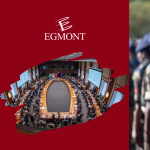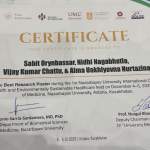Glenn Rayp, UNU-CRIS Research Fellow, delivers Presentation at the Opening Conference of the Center for Global Migration Studies (CeMIG), Göttingen

Glenn Rayp, UNU-CRIS Research Fellow, delivers a presentation at the Opening Conference of the Center for Global Migration Studies (CeMIG) that is entitled "Migration as a Global Challenge: Interdisciplinary Approaches to a Complex Field” that is taking place in Göttingen from 21 June until 23 June 2018.
Glenn Rayp will present a paper on “Constructing an Index of Migration Policy Selectivity”; Apart from Glenn Rayp, this paper is also co-authored by Ilse Ruyssen (Ghent University, IRES and UNU-CRIS) and Samuel Standaert (Ghent University, Clemson University and UNU-CRIS).
Abstract of the paper:
Migration policy has two fundamental dimensions: the extent to which access to the country is given to immigrants and to who access is given. The first dimension refers to the restrictiveness of migration policy, the latter to the selectivity of migration policy, i.e. the difference in restricitiveness in function of one or more characteristics of the migrant.
In our contribution, we discuss the feasibility of the construction of an index measuring the selectivity of migration policy at the country level, comparable between countries and over time, using existing publicly available data on migration policy. We develop a first indicator of the selectivity of migration policy using the DEMIG database. Selectivity of migration policy can refer to different characteristics of the migrant and is therefore by definition multidimensional. From the DEMIG data, we can identify three major components of selectivity: the skill level of the migrant, the level of economic resources and nationality, of which we have information about the policy regarding the access to the country, the right to stay in the country and integration. We aggregate this information, first at the level of the three dimensions of selectivity and second to one global index.
We discuss the evolution of the index, as regards the level and the structure of selectivity, over time as well as between countries. Using the index of restrictiveness of migration policy of Rayp et al. (World Development Vol. 95, pp. 141–163, 2017), we analyse the relationship between restrictiveness and selectivity of migration policy. Finally, we discuss and (try to) identify the determinants of migration policy selectivity.
More information about this conference can be consulted here.




